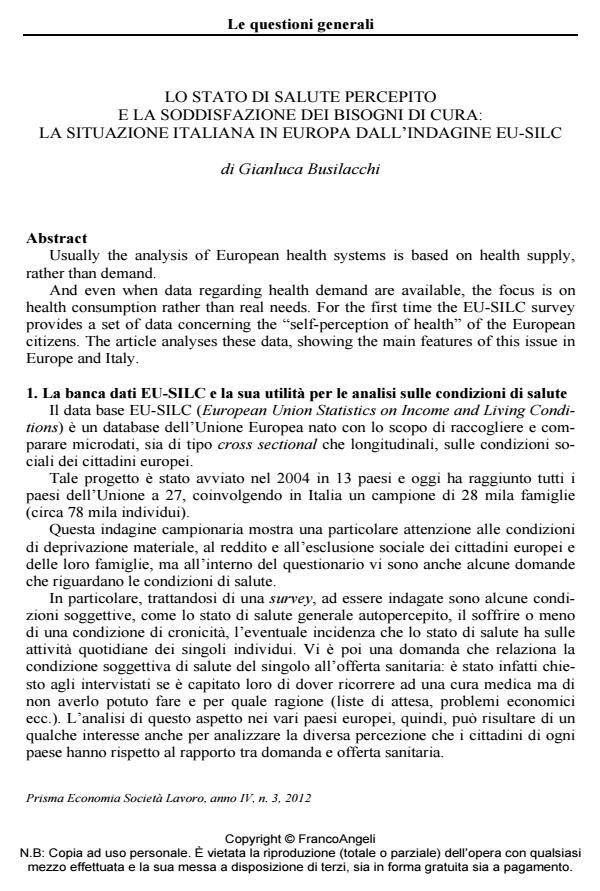Lo stato di salute percepito e la soddisfazione dei bisogni di cura: la situazione italiana in europa dall’indagine EU-SILC
Journal title PRISMA Economia - Società - Lavoro
Author/s Gianluca Busilacchi
Publishing Year 2014 Issue 2012/3
Language Italian Pages 19 P. 70-88 File size 716 KB
DOI 10.3280/PRI2012-003007
DOI is like a bar code for intellectual property: to have more infomation
click here
Below, you can see the article first page
If you want to buy this article in PDF format, you can do it, following the instructions to buy download credits

FrancoAngeli is member of Publishers International Linking Association, Inc (PILA), a not-for-profit association which run the CrossRef service enabling links to and from online scholarly content.
Usually the analysis of European health systems is based on health supply, rather than demand. And even when data regarding health demand are available, the focus is on health consumption rather than real needs. For the first time the EU-SILC survey provides a set of data concerning the "self-perception of health" of the European citizens. The article analyses these data, showing the main features of this issue in Europe and Italy
Gianluca Busilacchi, Lo stato di salute percepito e la soddisfazione dei bisogni di cura: la situazione italiana in europa dall’indagine EU-SILC in "PRISMA Economia - Società - Lavoro" 3/2012, pp 70-88, DOI: 10.3280/PRI2012-003007